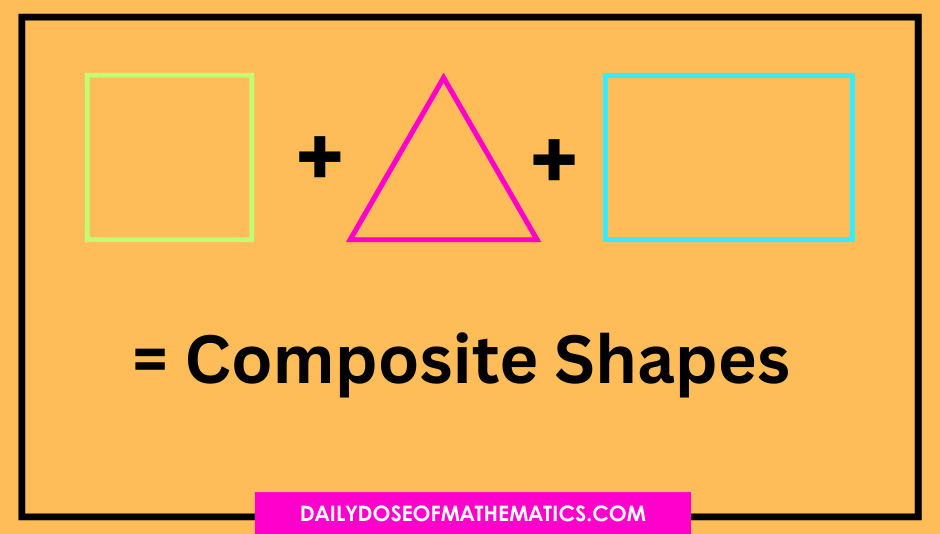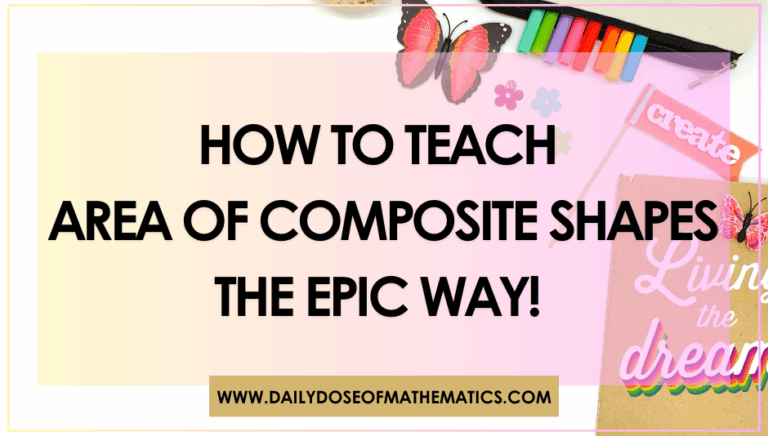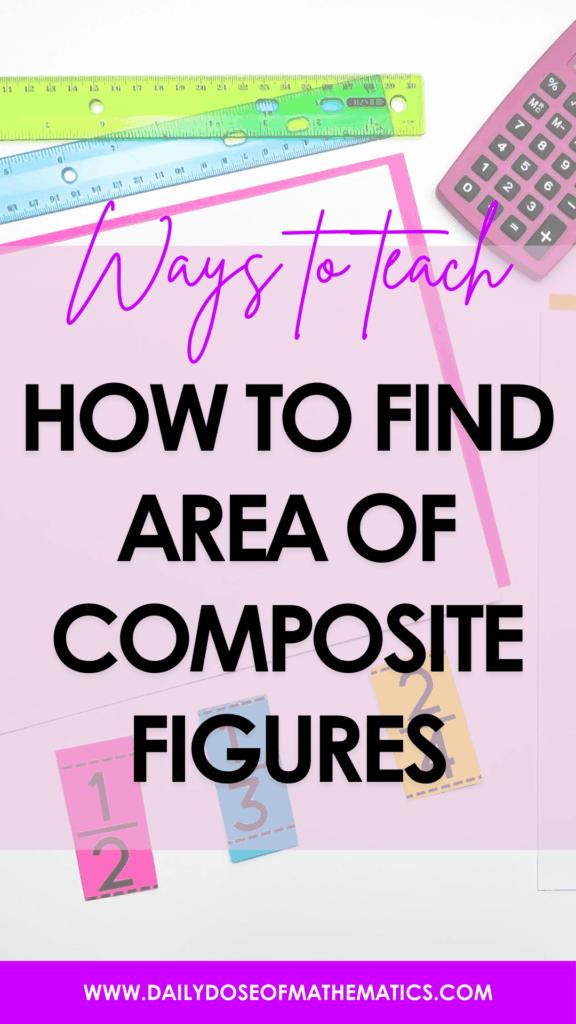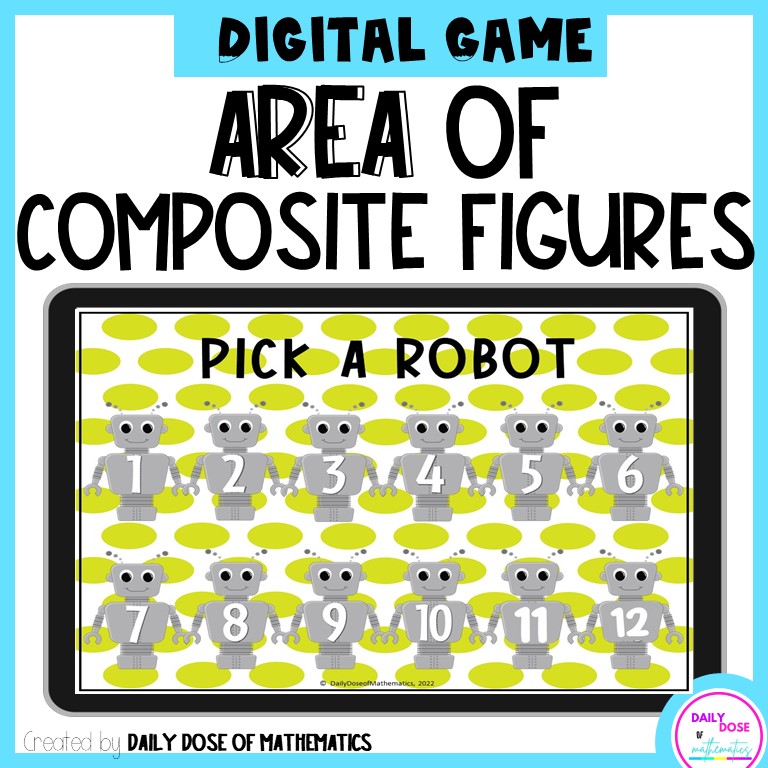How to teach the area of composite/complex figures in an EPIC way!
Struggling to teach the area of composite figures in a way your students actually get?
Ever wondered that every time you feel like thinking about how to get started or how even to think about introducing the topic to your kids, frustration kicks in!
Believe it or not, we all have been there during our first few years of teaching.
And you’re not alone… If your kids are zoning out the second you say “area” keep reading, this post breaks it down with easy, engaging ideas that make sense (and work for all levels).
Explore the Area of complex figures in an exciting way
Let’s be real right now teaching math isn’t what it used to be. Today’s kids are growing up with TikTok-level attention spans and infinite entertainment options at their fingertips.
That means if your area of complex shapes lessons are not engaging and exciting enough, you’ve already lost half the battle.
Here’s the good news, you don’t need flashy tech or hours of prep work just to make the area of composite figures click for your students. You just need the right strategy.
So how do you teach this topic in a way that’s fun, clear, and actually sticks?

The answer: make it visual, hands-on, and connected to real life, yup, that’s right this way your students aren’t just memorizing formulas, they’re solving problems like mini math detectives on a mission hunt.
Now the question is where do you begin?
Start with the Basics:
Like I said, it all starts with basics.
And to be honest, there is no other answer to this problem other than nailing the basics!
Here is the hard truth… if kids find the lesson interesting, they are more likely to be engaged and motivated to learn about the problem, think about it, practice it, and ultimately feel a sense of confidence in their skills.
This is why using gamified methods of teaching math inside your classroom can be a handy tool for teaching any concept!

Seeing Math Everywhere:
Here are the steps to help kids see math everywhere in their life.
Step 1: Help Students See Math Everywhere (Real-Life Hook)
One of the most effective ways to introduce composite figures is by showing students where these shapes exist in their world.
What it means is to check for there: Activate prior knowledge. Ask your students:
- What basic shapes do you already know?
- Can you think of any objects that are made up of more than one shape?
Then guide them to see that a playground, a building (maybe school) floor plan, or even a weird-shaped pizza is made of multiple simple shapes.
🟩 + 🟥 + 🟦 = Composite figure.
Your goal here is to help them realize that composite shapes are just familiar shapes combined, nothing fancy.

Step 2: Revisit the Basics with Hands-On Practice
Before diving into composite figures, make sure your students are rock solid on calculating the area of:
- Squares
- Rectangles
- Triangles
Here is a Pro Tip: Use graph paper and have them COUNT squares to confirm what the formulas actually do. This helps your visual and tactile learners “see” the math in action.
Step 3: Decompose a Composite Figure (using engaging activities)
Once the basics are solid, it’s time for the real fun, breaking down a complex shape into smaller, manageable parts.
Here is an activity you can try in your class:
- Show them a real-life layout — like a house blueprint or the shape of a playground.
- Ask them to identify the basic shapes they see.
- Have them outline or color-code each individual shape inside the figure.
- Guide them through finding the area of each part — and then adding it all together.
Want a fun way to reinforce this practice? Try out this this area and perimeter Color by Number activity!
Finding the Area of Composite Figures or Complex Figures (Color by Number)
Since kids have already mastered how to calculate the area of regular shapes, it’s time to introduce them to composite figures.
You can use any composite shape, like a park or a house layout, and ask what they see.
Tell them to imagine the shape as a whole building made by several small ones and treat every small shape like a rectangle, square, or triangle as a room inside the building.
Let them think about this concept for a while, and then decompose the shape into its parts and find the area of the individual basic shape.
Finding Area of Complex Figures Piece by Piece
Next, it’s time to decompose composite figures like literally breaking the big shape into smaller, familiar parts.
For better understanding, it’s good to introduce a composite figure with 2 or 3 squares or rectangles and then move on to the more complex figures.
The next step is to ask your kids how many squares or rectangles they see inside their big figures.
Have them trace or outline each individual shape in a different color and then calculate the area of each smaller part one shape at a time.
Pro Tip: Write the area inside each shape as they go to help them see their progress. Next step is to calculate the areas of these individual shapes.
Since your students by now already know how to calculate the area of regular figures, it would not be a daunting task. Lastly, ask them to add all of them together to get the total area.
Want some resources to practice the area of squares, rectangles, and triangles in an exciting way? Check out this area and perimeter Color by Number activity below.

Finding the Area of Complex Figures (Trending and Most Popular)
Now comes the fun part: tell your kids that we are calculating the area of the whole building, not just the single rooms inside.
They also know how to calculate it by adding the areas of each smaller shape. Basically, by summing up, kids will be able to tell what the area of the complex figure is.
Want some fun digital and printable activities to help you with this lesson?
Check out this exciting whole class activity: Digital game for area of composite figure that also includes printaba le worksheet for student accountability.
Want to access free math resources worth $29. Click here to learn more!
Click here to learn more about 5th Grade math activities that keep your students excited while learning math year long.
Join in to get special FREEBIES and Insider’s FUN!



